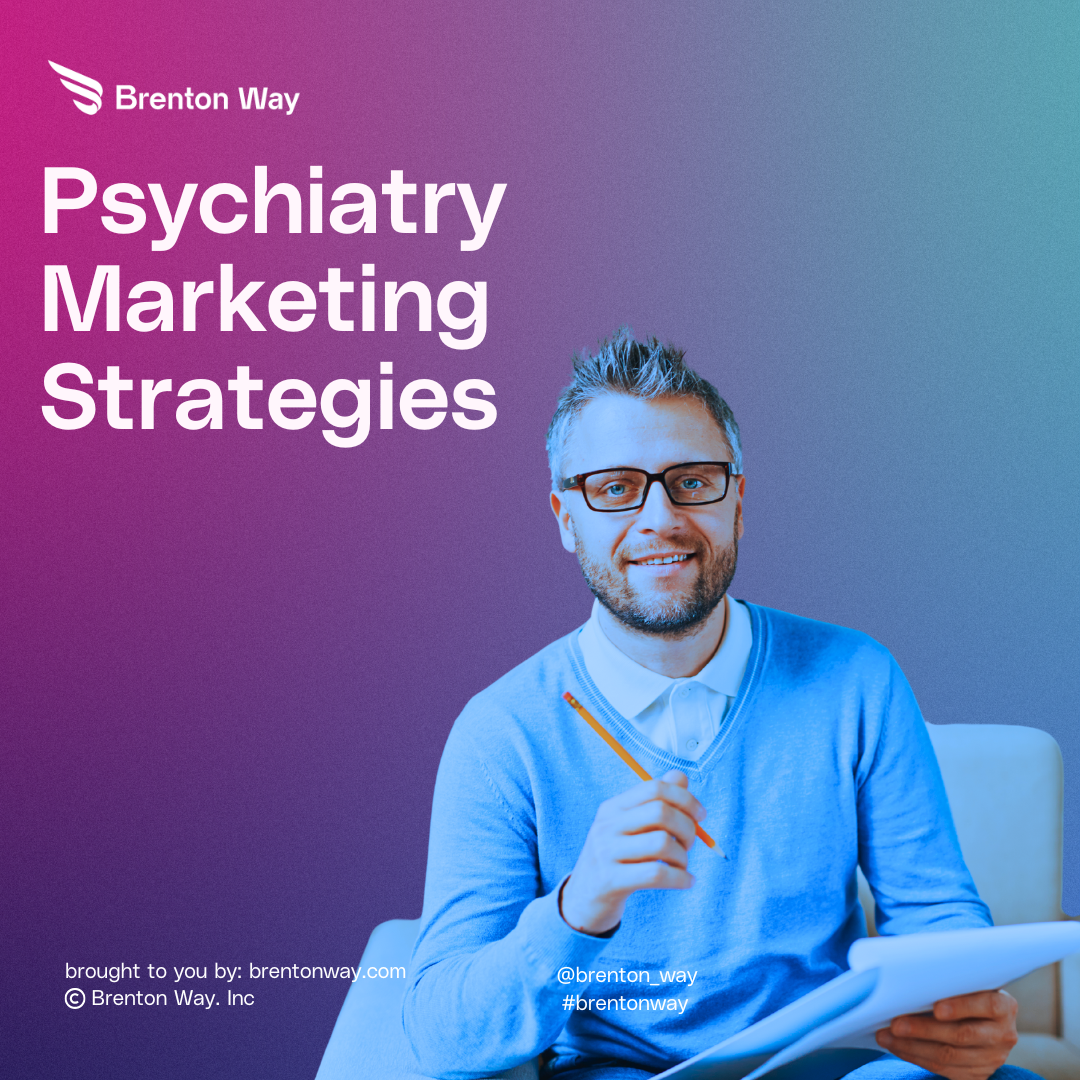
Neurology isn’t just another medical specialty; it’s where uncertainty often meets urgency. When someone is facing migraines that won’t go away, memory lapses they can’t explain, or a loved one is recovering from a stroke, they are not just looking for a doctor. They are looking for clarity, reassurance, and a team that can guide […]
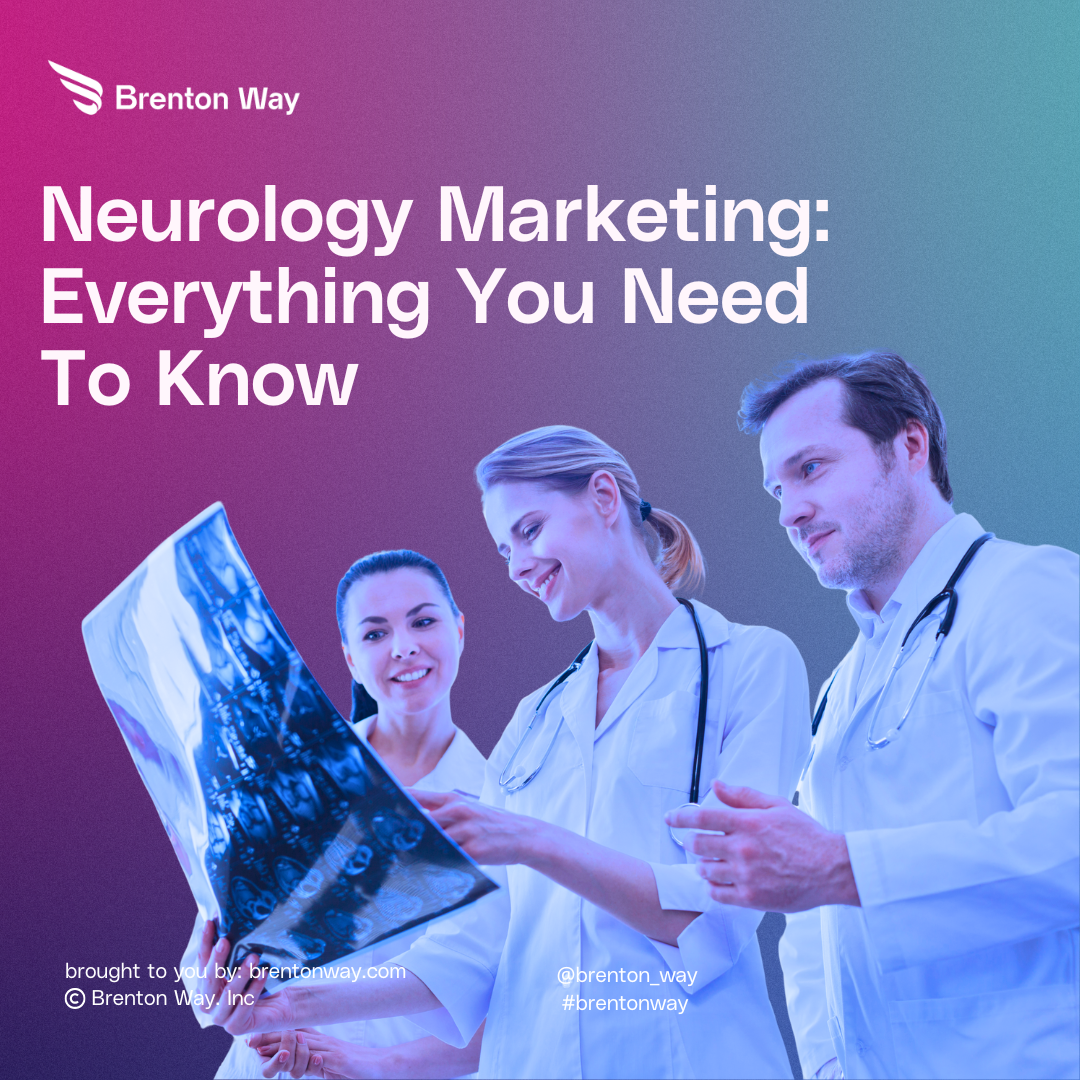
Neurology isn’t just another medical specialty; it’s where uncertainty often meets urgency. When someone is facing migraines that won’t go away, memory lapses they can’t explain, or a loved one is recovering from a stroke, they are not just looking for a doctor. They are looking for clarity, reassurance, and a team that can guide them through some of the most complex and emotionally charged health concerns they’ll ever face.
In this guide, we’ll explore how to create a neurology marketing strategy that speaks not just to search engines, but to real people navigating real fear, hope, and questions. Behind every Google search and referral is a person trying to make sense of their symptoms or advocate for someone they love. Healthcare marketing should help them find the right care, not overwhelm them with more uncertainty.
Before you can market effectively, you need to understand who you are talking to and what they are going through.
Neurology is a broad field, but your audience is looking for something specific.
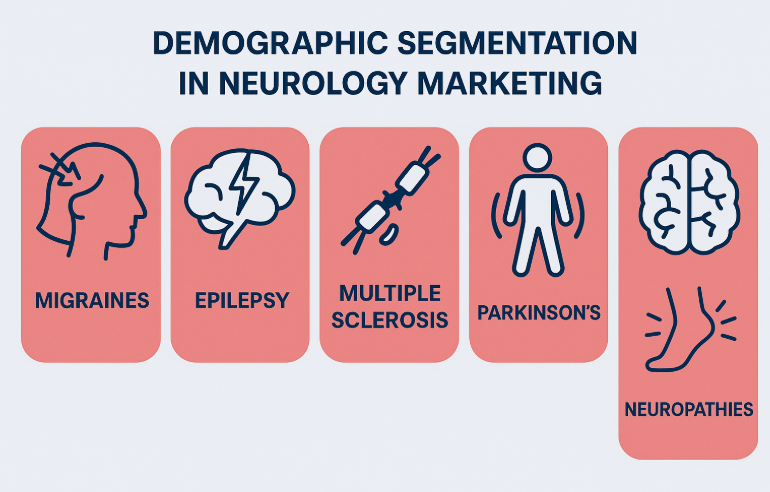
A patient with epilepsy is experiencing something entirely different from someone with Parkinson’s or neuropathy. Speak directly to each of these patient experiences.
Break your audience into real-life categories:
Each of these groups comes with unique fears, motivations, and decision-making processes. Your marketing should reflect that.
Many neurology potential patients are referred, rather than self-referred. That means primary care healthcare providers, physical therapists, rehab centers, and even psychologists are key players in your medical marketing ecosystem. If they don’t know about your expertise or worse, if referring to you feels like a black box, you are losing online visibility.
Build materials specifically for these referrers: a simple one-page handout outlining your sub-specialties, how to refer, and what follow-up they can expect. Make it easy for them to trust you with their patients.
It’s not just about credentials. Patients want:
Marketing should reflect all of that, not just what you do, but how you do it.
Neurology deals with some of the most life-altering diagnoses in the field of medicine. Your brand should immediately communicate that patients are in safe, capable hands.
From your logo and color palette to your website fonts and email signatures, everything should convey a consistent, calming, and credible image. Patients often feel vulnerable when searching for a neurologist. A cold, sterile brand design can reinforce fear; a warm, professional one can provide calm and trust.
Use your brand voice to walk the line between clinical authority and human understanding. Your tone should say: We know what we’re doing, and we care that you’re here.
Do you offer diagnostic tools that other practices don’t? Do you specialize in a niche area of neurology that others overlook, like movement disorders, neuroimmunology, or neuromuscular disease? Have you designed your practice with longer visit times to ensure patients feel heard?
Your USP (Unique Selling Proposition) should be grounded in how you improve patient lives.
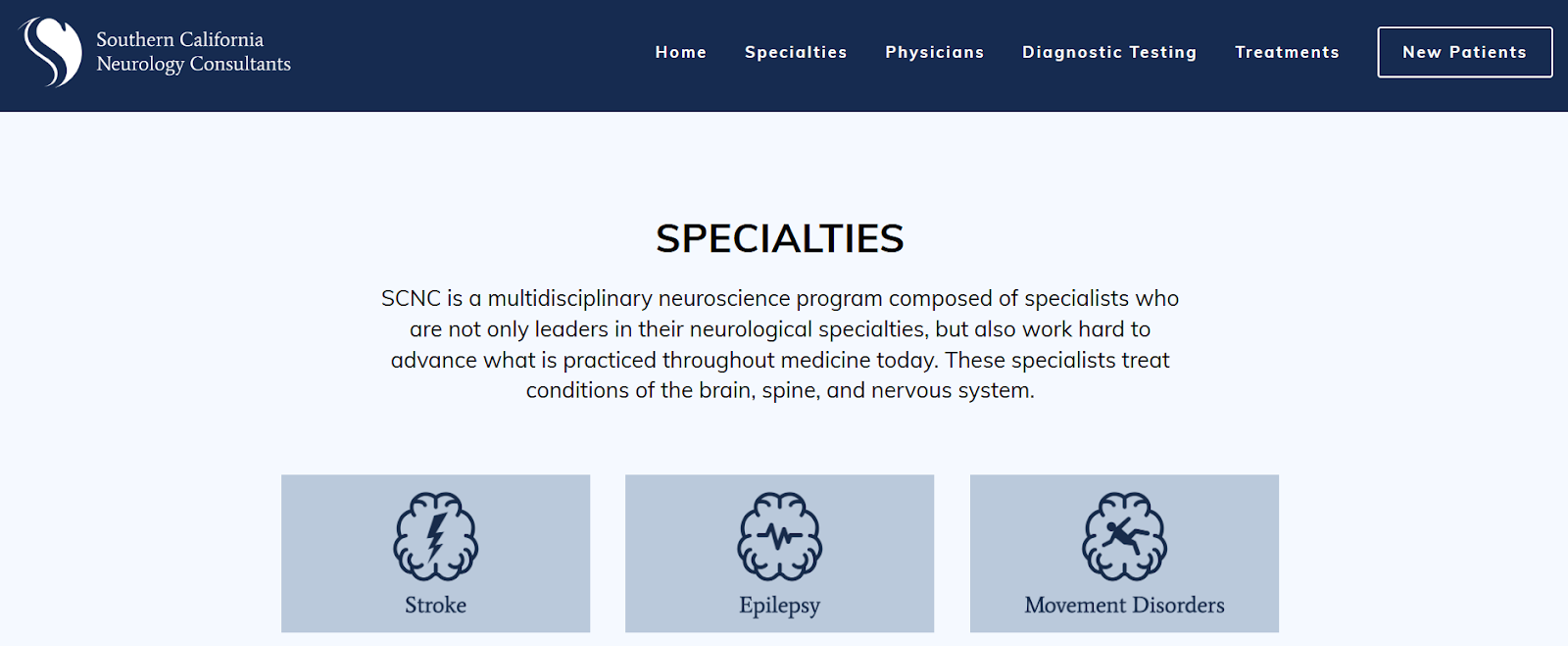
Not marketing fluff, but real, meaningful differentiation.
For many patients, your website is their first interaction with your practice, often before they even speak to your staff. That moment matters. They may be in the middle of dealing with unexplained dizziness, new-onset seizures, or a loved one’s sudden memory loss. They’re not just looking for a list of services; they’re scanning for signs that they’ve found the right place to get answers.
Your site needs to be clean, fast, user-friendly, and focused on delivering an excellent patient experience. Not just because it’s “good design” but because someone in crisis doesn’t have time to dig.
Your neurology website must include:
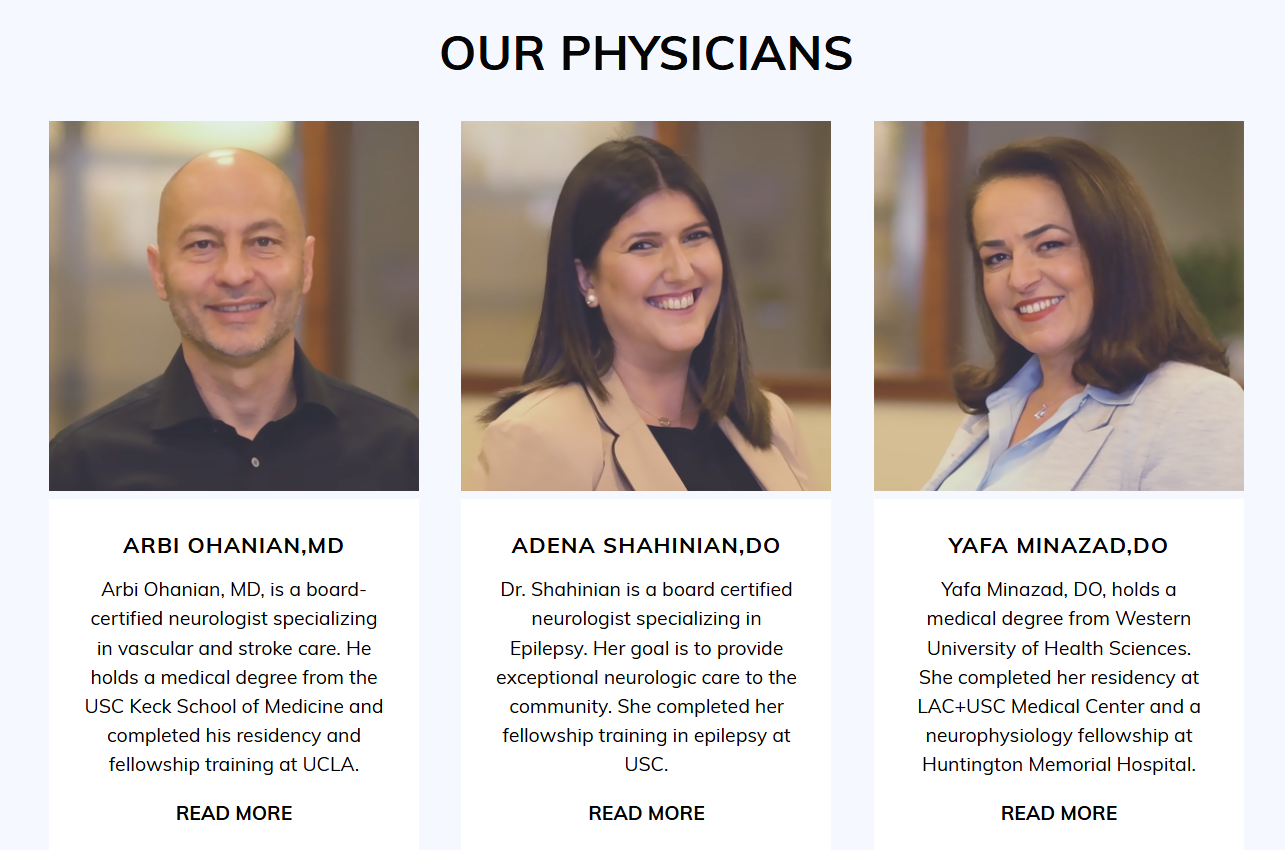
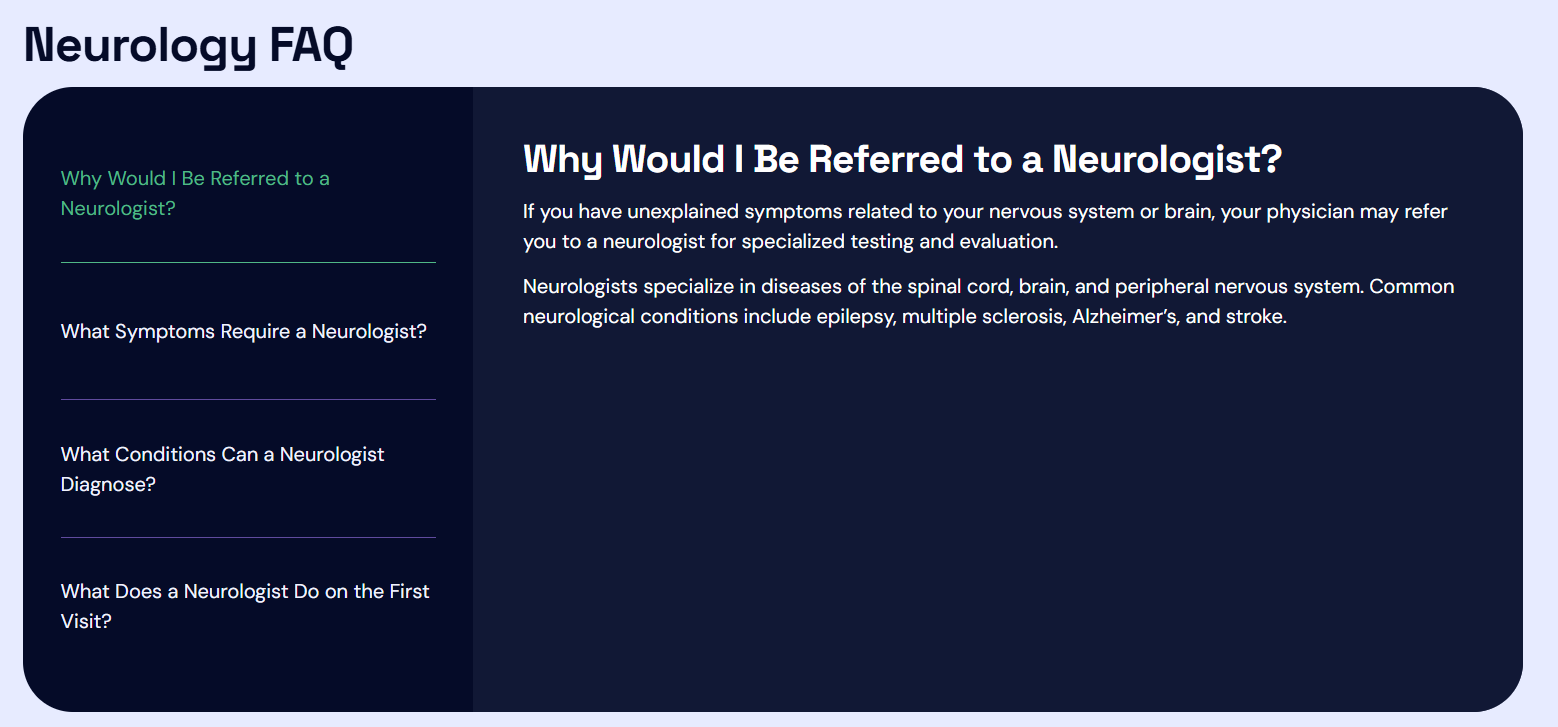
Make sure that from the homepage to the contact form, your site communicates: We’re here, we understand, and we know how to help.
Patients might not always know the name of the condition they’re dealing with, but they’ll search for the symptoms.
Prioritize SEO keywords that reflect how people actually search:

What you should be doing:

Patients aren’t just searching for answers, they’re searching for you. Good SEO ensures they find you before they give up or choose a less capable care provider.
In neurology, knowledge is power and often comfort. When patients are dealing with something they don’t understand, they look for information that’s clear, trustworthy, and compassionate.
Forget medical jargon. Focus on clarity, valuable content and emotional resonance.
Instead of “Peripheral Neuropathy: Etiology and Management,” try:
👉 “Why Do My Feet Tingle at Night? Understanding Neuropathy”
Instead of “Cognitive Decline in Neurodegenerative Disorders,” try:
👉 “Is This Just Forgetfulness or Something More?”
You are not writing for physicians, you’re writing for someone who is scared they might have MS, or for a spouse wondering if their partner’s confusion is normal aging or early dementia.
Patients want to see you, especially when they’re nervous. Simple videos can go a long way:
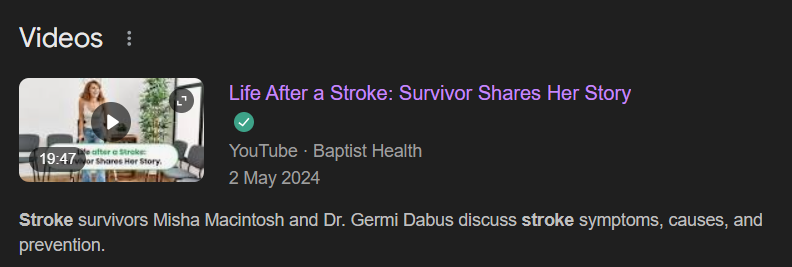
Keep it real. You don’t need studio lighting. You need kindness and clarity.
Neurology is full of misunderstood or stigmatized conditions. A webinar titled “Understanding Parkinson’s in the Early Years” or “Caring for Someone with Epilepsy: A Q&A with Our Team” can build real community and trust.
This isn’t about flashy graphics. It’s about thoughtful, regular touchpoints that provide value:
Done right, email builds loyalty and keeps your practice top of mind.
Your patients and their caregivers are scrolling. They are on Facebook looking for support groups, on Instagram watching health tips, and on LinkedIn searching for provider credibility.
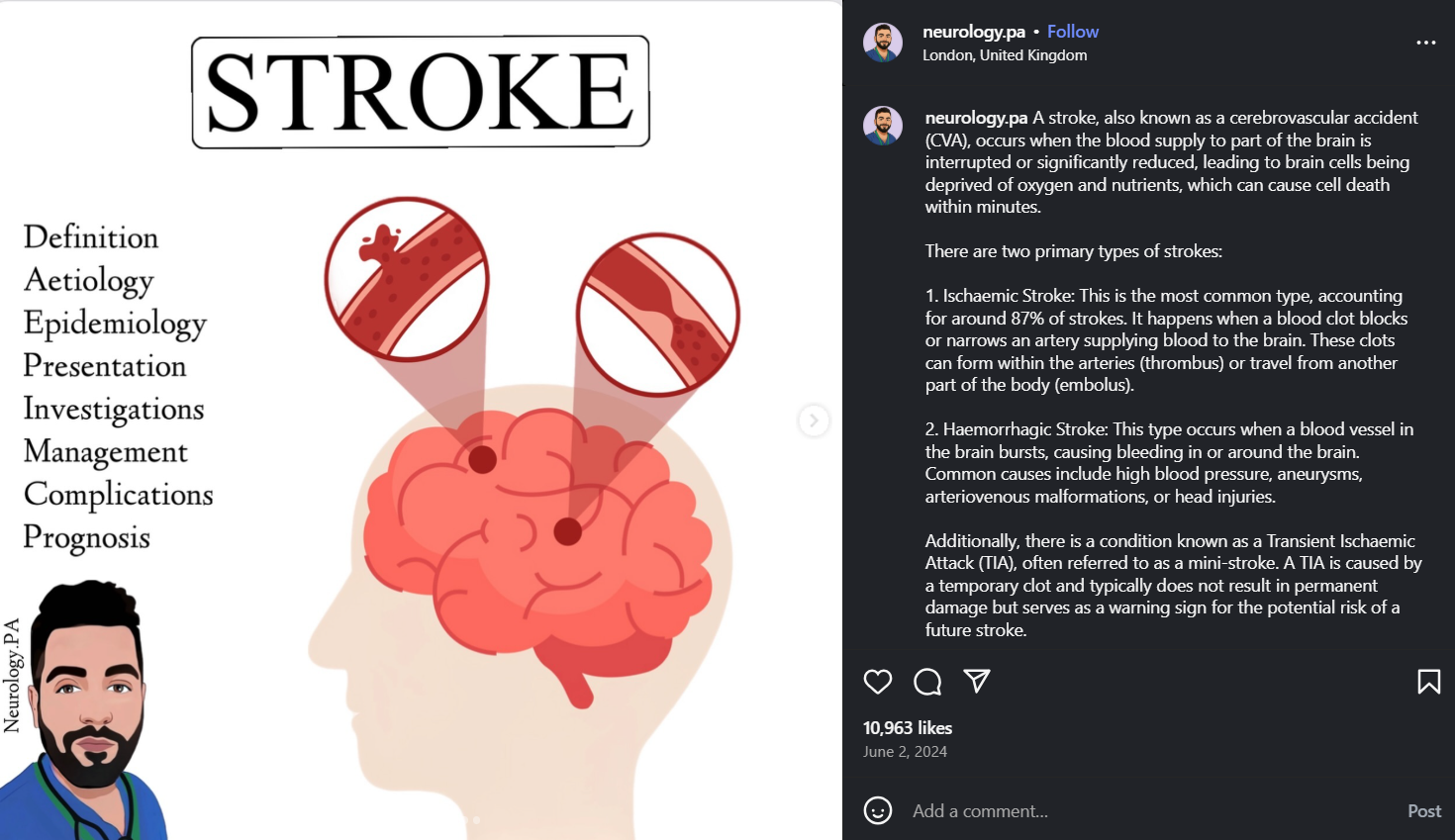
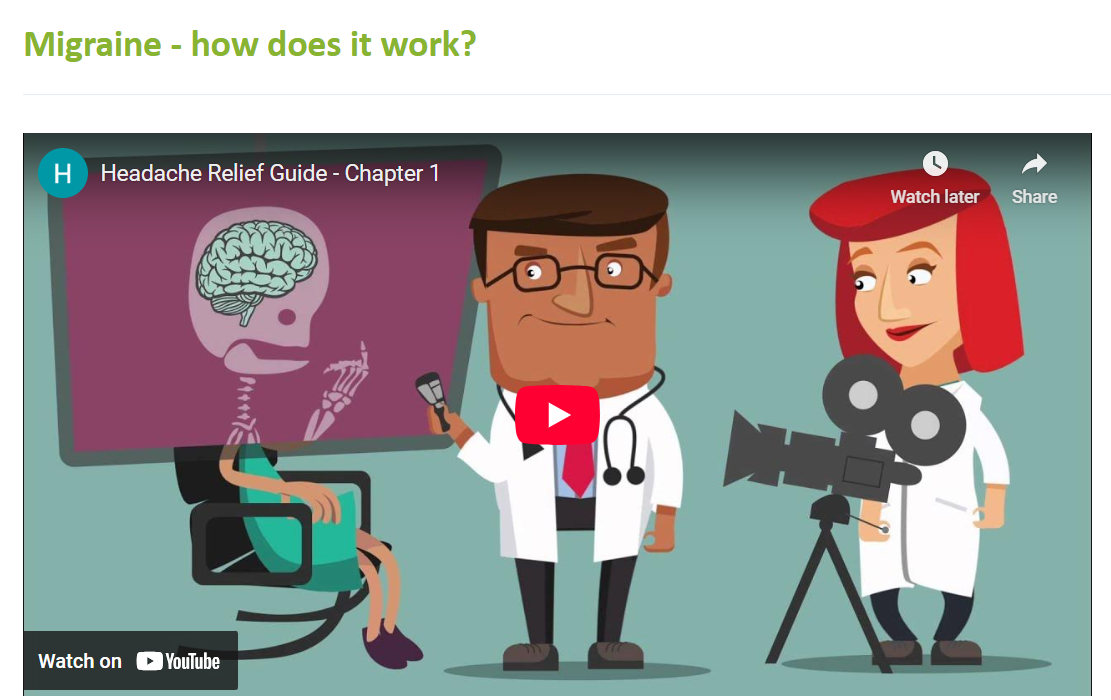
Respond to comments and questions, not with canned replies, but with genuine empathy. Use DMs thoughtfully. Social isn’t just for broadcasting, it’s for connection.
When someone types your practice name into Google, what they see isn’t just online reviews, it’s a reflection of how much people trust you with their health. And in neurology, where patients are often scared and vulnerable, that trust means everything.
A single five-star review saying, “They explained my diagnosis in a way I could actually understand,” can do more for your practice than any marketing campaign.
Encourage satisfied patients to leave honest reviews after they have had a positive experience.
The best time? Right after they express gratitude, whether in person or in a follow-up call.
Use platforms that matter:
Make it easy. Include a simple link in your post-visit email or text.
When you reply to a review; positive or negative, you’re not just talking to one person. You’re talking to every future patient reading that thread.
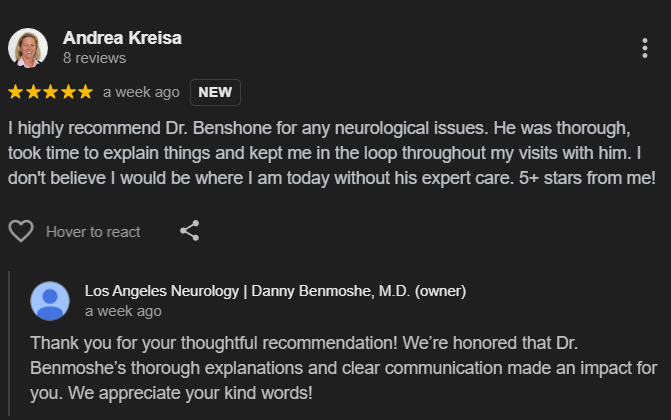
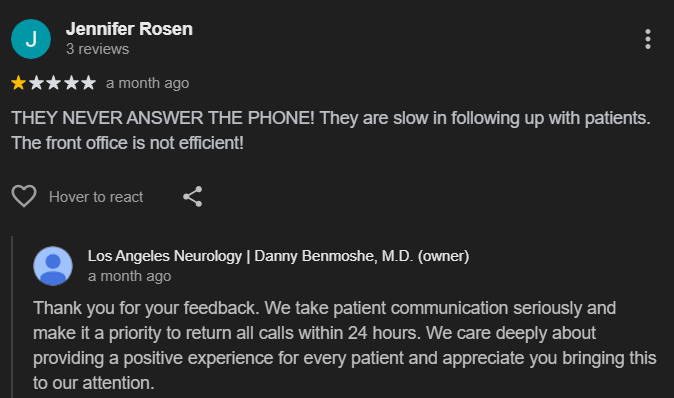
A short video of a stroke survivor talking about their recovery journey with your clinic? That’s not just marketing, it’s hope for someone else reading it at 2 a.m., wondering if their loved one will ever walk again.
Always obtain written consent, and ensure that these videos are framed around patient empowerment, not promotion.
Neurology doesn’t happen in isolation. Your practice exists in a healthcare ecosystem, and the more visible and helpful you are in your community, the more patients and providers will turn to you when it matters.
Offer talks at local hospitals, rehab centers, or even libraries. Not as advertisements, but as value-driven sessions like:
These events not only position you as an expert, but they also make your name stick when someone is making a referral.
PCPs and specialists want to know that when they refer a patient to you, the patient is cared for and they are not left out of the loop.
What builds long-term referral trust?
Make referrals frictionless. Provide an easy form, a direct contact number, and a human on the other end.
Partner with or host local support groups for Parkinson’s, MS, epilepsy, and stroke survivors. You don’t have to lead every session; just provide the space, occasional guest speakers, and resources.
These aren’t just beneficial for patients; they build your brand as a place where people form a real connection.
Organic growth is powerful, but when someone’s searching for help now, paid ads can bridge the gap between need and action.
Search ads work best when they mirror what patients are actually typing:
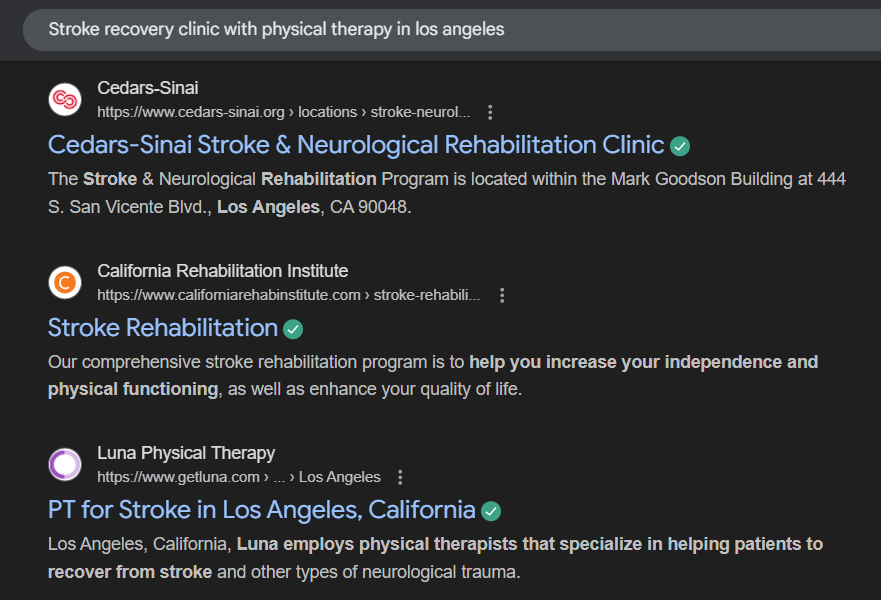
Use specific landing pages. Don’t send everyone to your homepage. Send people searching for “epilepsy specialist” to your epilepsy care page, with direct appointment scheduling.
Run targeted awareness ads for:
Use location, age, and condition targeting to keep ads relevant, not generic.
If someone visited your website but didn’t book, retargeting ads can remind them gently:
Sometimes, patients need time. A nudge can help them take the next step.
In neurology marketing, data tells you what’s working. But it’s how you interpret that data with empathy and intention that creates better patient experiences.
These aren’t just numbers, they are clues about what your audience needs.
Ask patients how they found you. Did they read a blog post? Watch a webinar? Hear about you from a friend?
These stories are just as important as analytics. Use them to guide your next steps.
| Month | Key Activities |
| 1 | Launch new website, claim Google Business Profile, complete SEO setup |
| 2 | Start blog + social media, ask for reviews, optimize referral forms |
| 3 | Host first webinar, launch patient newsletter, publish 2 condition-specific videos |
| 4 | Start Google Ads, send referring provider updates, partner with a local support group |
This is just a starting point, but it helps ensure that your growth is strategic, consistent, and aligned with both clinical goals and community impact.
Even the most experienced neurology team can’t (and shouldn’t) do it all. The right tools can help you scale your efforts, stay consistent, and protect your time so your staff can focus on what matters most: patient care.
👉 WordPress + Elementor: Customizable and robust. Great for SEO.

👉 Squarespace or Wix: Easier to manage internally if you’re a small team.

👉 Google Analytics + Search Console: Track performance and search visibility.
👉 Semrush / Ahrefs: Keyword research, competitor benchmarking.

👉 Mailchimp or Constant Contact: Automate newsletters and appointment reminders.
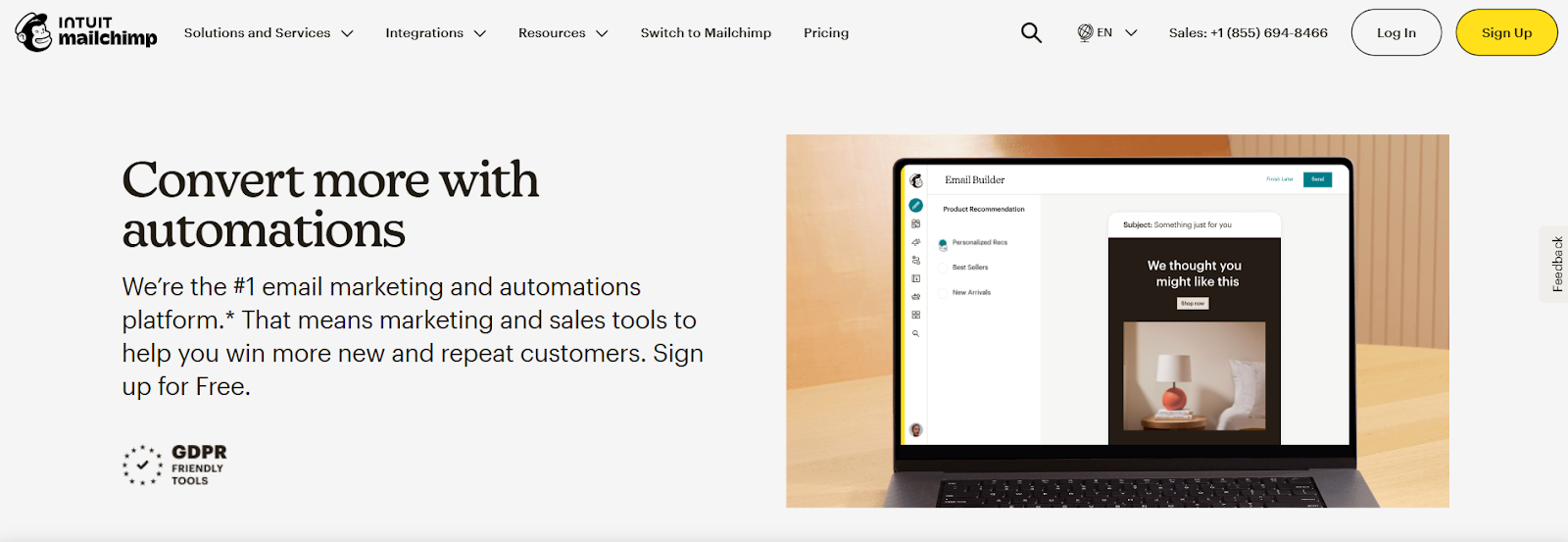
👉 Updox / Klara: HIPAA-compliant messaging with a patient-centric feel.
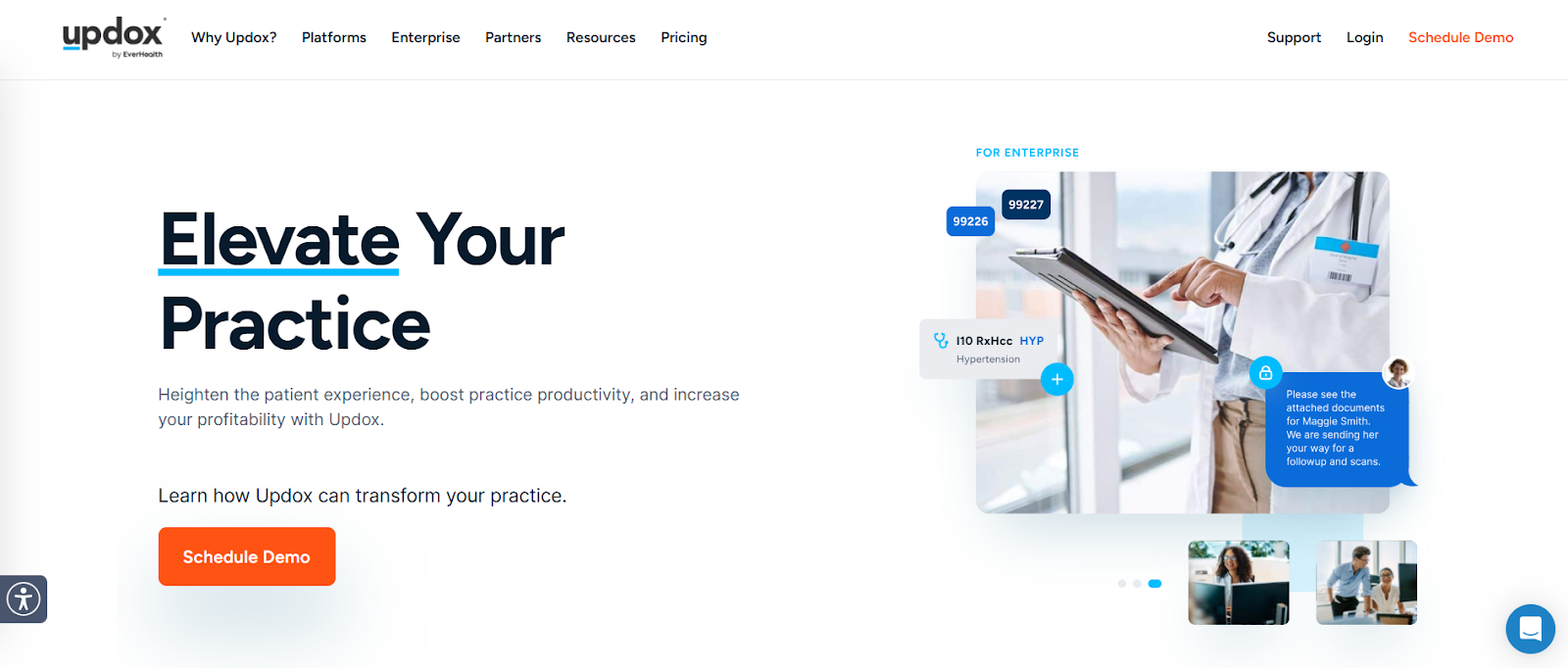
👉 Buffer / Hootsuite / Later: Manage posting across Facebook, Instagram, and LinkedIn.

👉 Canva Pro: Design social graphics and flyers without a designer.
👉 Birdeye / Podium / Reputation: Automate and monitor patient review generation and feedback loops.
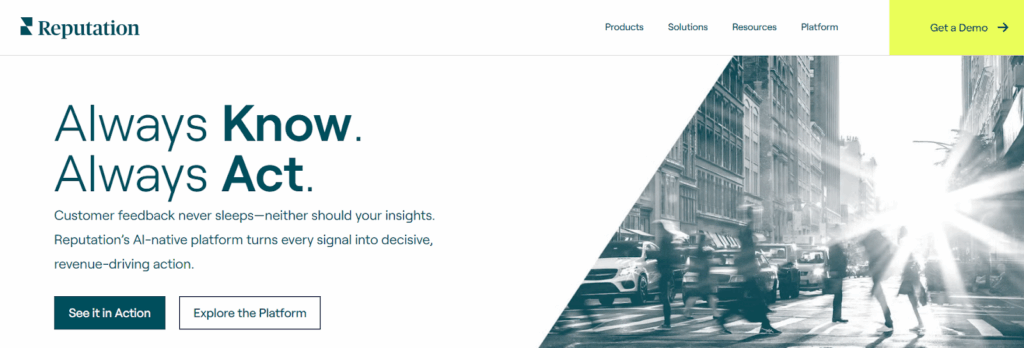
Every tool should save time and elevate the patient experience. If it doesn’t do both, it’s not the right fit.
Neurology patients often come to your door carrying more than symptoms: they carry fear, confusion, sometimes even despair. In a world of hurried appointments and medical jargon, your marketing is your first chance to say:
“You’re not alone. We see you. And we know how to help.”
This guide isn’t just about clicks, traffic, or rankings. It’s about building a practice that patients feel safe turning to when they’re at their most vulnerable and ensuring that your expertise reaches the people who need it most.
It’s about pairing science with empathy, strategy with humanity, and visibility with integrity.
Whether you’re launching a new neurology practice or elevating an established one, marketing done right can be more than a business decision. It can be a public service.


